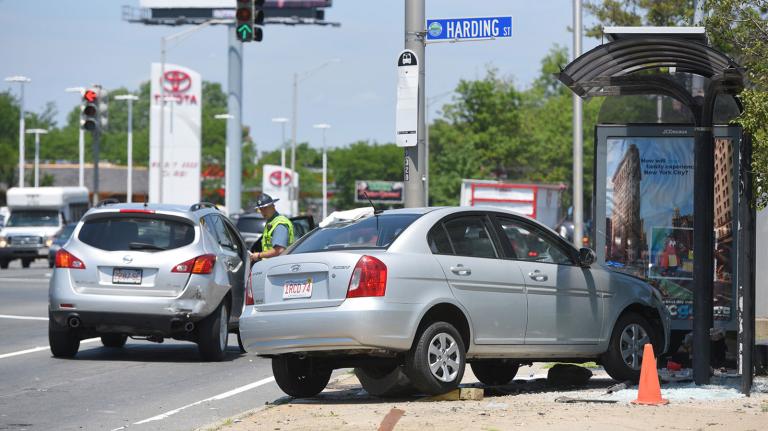At the end of June, Detroit experienced its second 500-year flood in seven years. In some areas, 6 inches of rain fell in just five hours. Rain for the whole month of June is typically three inches. The extreme rains flooded homes and businesses with water and backed-up sewage, left around 1,000 cars stranded on the roads, and caused mass power outages.
It was a distressingly familiar experience for Detroiters. Detroit’s last 500-year flood, in 2014, caused $1.8 billion in damages. More major flooding followed in 2016, 2019, and 2020. A new preprint of a study by researchers at the University of Michigan and Wayne State University found that recurrent flooding is more prevalent than previously thought in Detroit and that primarily African-American neighborhoods are at risk.
In Detroit, flooding is both a climate crisis and an environmental justice crisis. Detroit is one of the poorest big cities in the country and has the most Black residents of any major city, and it’s increasingly being hit by extreme weather events associated with climate change that are impacting its most vulnerable residents. And it’s not just flooding. Detroit has also dealt with increasing cold and hot extremes in the last decade coupled with mass utility shut-offs and frequent outages, creating dangerous conditions for its residents. Last month, a study published in Environmental Science & Technology predicted that a combined heatwave and power outage in Detroit could result in more fatalities than Hurricane Katrina.
The Midwest has a reputation as a future safe haven for climate change migrants, with the abundant fresh water, vast agricultural land, and relatively cool temperatures. But the Midwest isn’t immune to the effects of climate change, and Detroit is just one example. Chicago is facing the potential of catastrophic flooding from the rising waters of Lake Michigan, which reached record-high levels in 2020. The Great Lakes ecosystems are threatened by warming even in the lakes’ deepest waters. Cities and rural areas across the Midwest are experiencing, and will experience even more, extreme heat events that threaten agricultural output as well as human health.
The full damage of the latest historic flood in Detroit isn’t known yet. On Thursday, the Federal Emergency Management Agency, or FEMA, began assessing the damage done to Detroit in the June flood. It’s already clear that the destruction was considerable: Backed-up sewage flowed into basements, forcing many residents to throw out priceless mementos and other items. Businesses had to throw out damaged inventory, like Bunny Bunny, a restaurant that lost $4,000 just in ingredients. The Detroit Public Library’s main location will be closed until after Labor Day to deal with flood damage. A shipping yard full of what appeared to be brand new Jeep Grand Cherokees was hit, with vehicles almost completely submerged in water. Almost 10 billion gallons of sewer water went into nearby waterways, and beaches closed due to high levels of E. coli bacterial contamination.
The results of FEMA’s assessment could lead the state to ask for a federal disaster designation, which, if granted, would unlock federal financial assistance for individual homeowners or for public use. If approved, it would still be several months before homeowners would get relief. Michigan’s governor, Gretchen Whitmer, already declared a state of emergency for Wayne County, where Detroit is located, due to flooding, and later amended it to include surrounding suburbs due to three tornadoes that hit following the storms. A state of emergency dedicates more resources to recovery and allows for better coordination between state and local agencies in relief efforts.
Detroit needs major investments to make it more resilient to future flooding events. At the state level, Governor Whitmer’s Michigan Clean Water Plan, announced in 2020, proposes $238 million for stormwater upgrades. But it’s not enough. The Southeast Michigan Council of Governments estimates that it would cost $1 billion each year until 2045 to sufficiently shore up stormwater drainage infrastructure, and in just seven of Michigan’s 83 counties.
Environmental organizers like Michelle Martinez, executive director of the Michigan Environmental Justice Coalition, are hoping that a federal infrastructure bill will provide relief to Detroit residents. A few months ago, President Joe Biden announced a $2 trillion infrastructure plan that would “tackle climate change” — a plan that has been significantly watered down in negotiations with centrist senators. Martinez decried the current plan’s failure to address climate change and called on Washington to make major investments in climate change mitigation and adaptation.
“This incident is not just about a flooded basement,” she said in an email message to coalition subscribers. “It’s about three generations of disinvestment in the infrastructure that supports our homes and schools, family businesses and houses of worship; compounded by racist policies like redlining and blockbusting.”
“What we need now is unprecedented investment in our infrastructure,” Martinez added.



